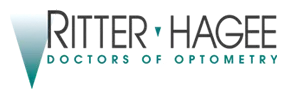Finding that first pair of eyeglasses for your child can sometimes be very difficult. There are many considerations that need to be made, ranging from frame durability to lens safety. Furthermore, the constantly changing nature of children’s vision and wear-and-tear on glasses can also put a significant dent on the pocketbook. Some kids need their glasses for everything they do, while others need them just for reading and homework. Having been in the business for so long, of course we realize the problems that may arise, and will work with you parents in every way possible. Here are some considerations before purchasing eyeglasses for your child.
Frame Type
It is essential for your child to find a frame that he or she will want to wear. If your son or daughter is not excited about wearing new glasses, it can be very difficult for parents to require him or her to keep them on. The more fashion forward, the less likely they are to feel less self-confident about wearing them. Depending on your child’s prescription, the lenses may have varying thicknesses. If they are excessively farsighted, the lens will be thick in the middle but thinner towards the outer part of the lens. To minimize edge thickness find a frame that is a little larger than average. For nearsight- ness, the reverse is true, and you’ll want a slightly smaller frame.
For all children, the frames should be flexible yet sturdy. Plastic or metal frames may be suitable for young faces. A good feature to look for on a metal frame is spring hinges, which allows the temples to be pulled outward without causing damage. This may save on trips back to the office for adjustments or expensive repair costs. Consideration should be paid to the type of metal, as some types may exacerbate skin allergies. If choosing a plastic frame, make sure the frame fits over the bridge of the nose properly and does not slide excessively with a little bit of pulling.
Some very young children or toddlers are constantly trying to remove their glasses. You may want to consider cable temples for these kids. These are temples that wrap around the back of the ear, making them difficult to pull or slide off.
Lens Types:
Ask your doctor or one of our opticians about special lens considerations. Safety of lens material is always of paramount importance, so for virtually all children we prescribe polycarbonate lenses. These types of hard plastic have demonstrated incredible ability to withstand dangerous shattering when struck by hard objects. In fact, they have been used in the manufacturing of windshields in NASA’s space shuttles! As a bonus, there are also the additional benefits of being thinner and lightweight than other materials, they offer better scratch resistance, and no additional ultraviolet protection is required. These are often marketed as “featherweight” lenses.
Additional lens options:
Anti-reflective coating: An A/R coating allows more light to pass through the lens rather than bouncing off of the surface. This allows the lens to have improved optical qualities, and you see more of your child’s eyes and less of the reflections off of the ceiling. It is shown to relieve eyestrain associated with glare from computer use and night driving.
Photochromic:
Sometimes the “cool factor” associated with having your lenses go from indoor, clear glasses to dark sunglasses in a few seconds is just the motivating factor a child needs to wear his glasses all the time. These special lenses absorb UV light from the sun, and use it to change the lenses into sunglasses.
Scratch Protection and UV coatings:
Should you choose to forgo polycarbonate lenses against our advice, we recommend these separate coatings to prevent excessive wear and tear, and harmful rays from the sun.
Sports Glasses:
If your child is involved in sports with fast-moving balls or body parts (i.e elbows) his or her regular glasses may not provide sufficient protection, even with polycarbonate lenses. Goggles designed specifically for sports will allow for excellent central and peripheral vision, while safely delivering the forces from impact to the bony portions around the eye rather than to the eyeball itself. These glasses may pay for themselves many times over if they prevent even a single injury.
Sunglasses:
A lifetime of UV rays has been proven to cause age-related eye problems such as cataracts, macular degeneration, and skin cancers, so protecting your child’s eyes early on could pay dividends when he or she is a mature adult. Sometimes, we can take an old pair of glasses and put new tinted lenses in them, or even tint an older pair of lenses here in our office.
Backup Glasses:
The fact of the matter is that, no matter how hard we try to provide safe, durable eyeglasses for your children, chances are pretty good that sometimes their glasses will break. If your child is dependent on his correction and cannot function in school or home without his glasses, please consider a backup pair. We offer excellent discounts on the second pair, and the frame does not need to be anything extravagant, just functional.
